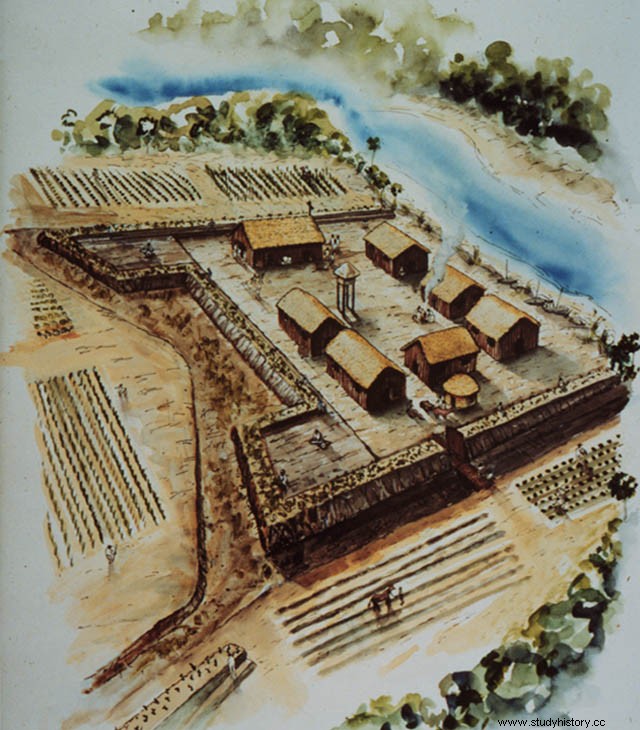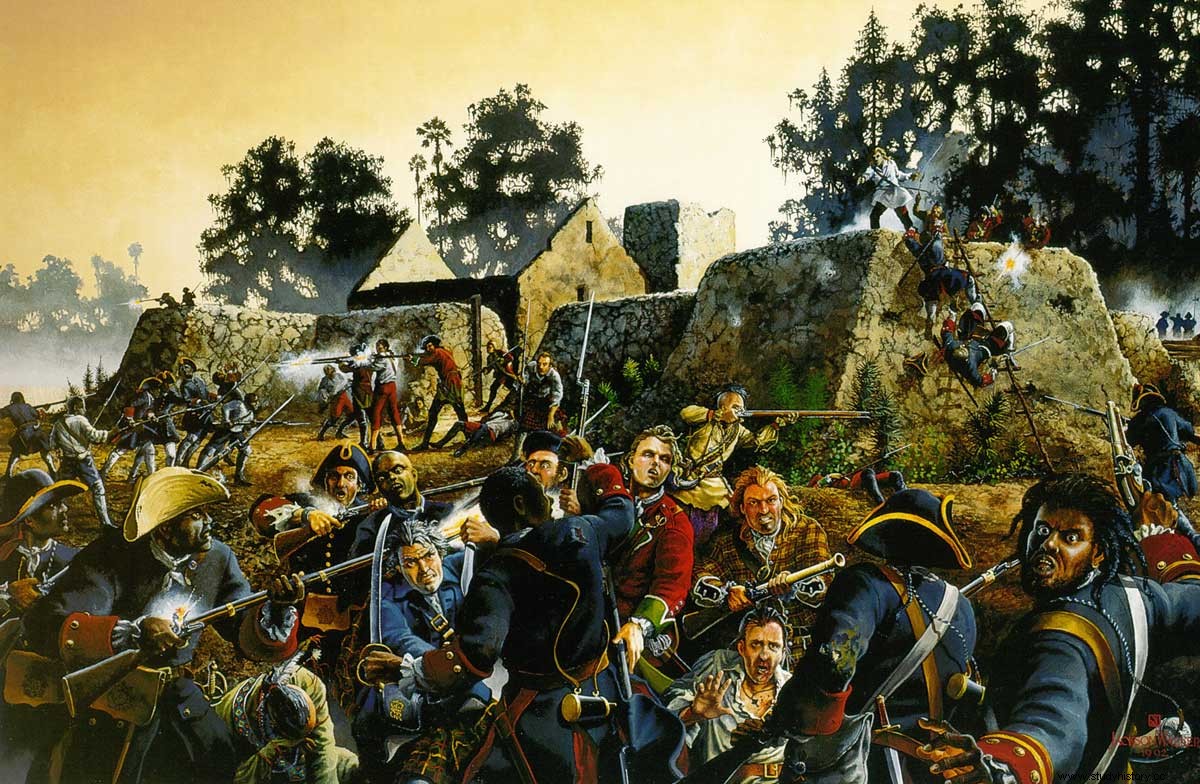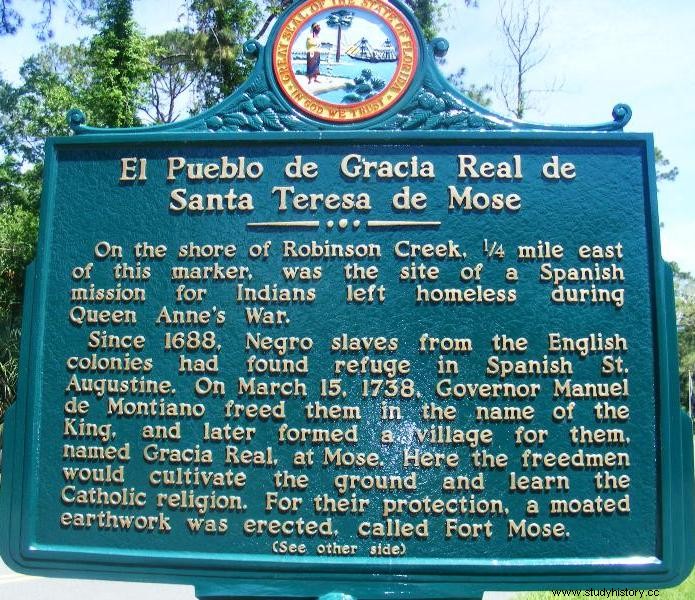Saint Augustine (Florida) is the oldest European settlement occupied today in the continental part of the present territory of the United States. It was founded by Pedro Menéndez de Avilés on August 28, 1565, and not for colonial or economic reasons, but military ones. Spain located a military contingent to stop the attacks of the pirates. In 1568 he received the visit of Francis Drake , at the service of the English crown, which destroyed a large part of the settlement but was unable to expel the Spanish. In greater or lesser intensity, the pirate attacks were repeated periodically but never achieved their objective.
In 1687 eleven black slaves (eight men, two women and one child) fled from the English colonies arrived in San Agustín. They requested asylum from the Spanish authorities and they were granted it in exchange for being baptized and collaborating in the construction of the Castillo de San Marcos - they even received a payment for the work. Word spread among the slaves, and many risked their lives to escape slavery and reach the sanctuary of freedom. Contributing to all this was the fact that in 1693 King Charles II of Spain decreed that all fugitive slaves who reached Florida would be freed... if they converted to Catholicism and served four years in the service of the Spanish crown fighting with the militia. In 1738, the governor of Florida, the Basque Manuel de Montiano , allowed them to establish a settlement about three kilometers from San Agustín which they called Gracia Real de Santa Teresa de Mosé –Fort Mose -. That place became the first legal settlement of free blacks in the current territory of the United States.

Fort Mose was made up of 20 barracks and a church protected by a perimeter wall around which the farm fields were located. Its population, of about 100 people, was made up of men born free in Africa and brought to the continent as slaves who had managed to escape from the British colonies, together with their wives, also fugitive slaves, and their free-born children. In front of the fort, which enjoyed great autonomy from San Agustín, was an African baptized as Francisco Menéndez . Because freed slaves were required to serve four years in the militia, Fort Mose became a defensive stronghold for St. Augustine on the northern border. After some British skirmishes that managed to repel without problems, in 1740 General James Oglethorpe attacked the fort with a very large army against which Francisco Menéndez and his men could hardly resist. They were ordered to abandon the fort and take refuge in St. Augustine... the British took Fort Mose. The joy of the English did not last long, because the militiamen, supported by Spanish troops, managed to recover the fort in a few days.

For more than 20 years, fugitive slaves were arriving and repelling new British incursions, until... everything was lost in 1763. Due to a peace treaty, in this case that of Paris after the Seven Years' War, which are no more that barter markets, Spain ceded Florida to the British -it is true that, in exchange, we got French Louisiana that we lost again in 1800-. Both Fort Mose and San Agustín were abandoned and the majority of free slaves and Spaniards settled on the island of Cuba. It was recovered again in 1783, after defeating the English at the battle of Pensacola where militiamen and Spaniards participated, some even with their children born in Cuban exile, who 20 years ago had to leave the site. Florida officially returned to Spanish hands but no one ever returned to the ruins of Fort Mosé to rebuild it. Definitively, in 1821, Spain sold Florida to the US for 5 million dollars that must be with the Moscow gold .
In 1994, the State of Florida bought the land of this stronghold of freedom -about 23 acres- and declared the area of historical interest: Fort Mose Historic State Park .

